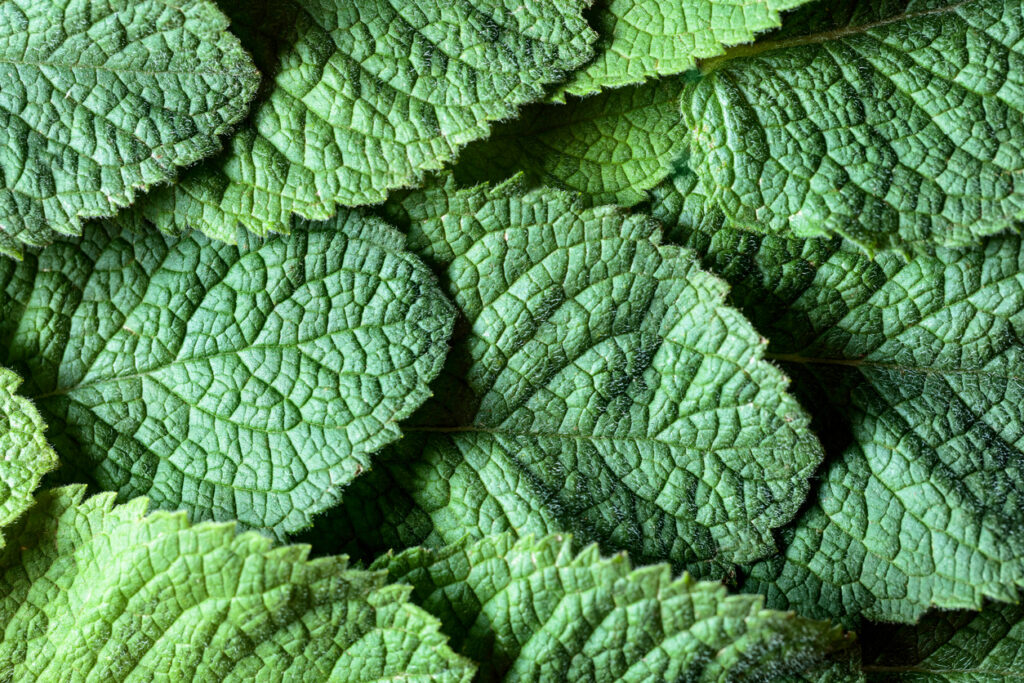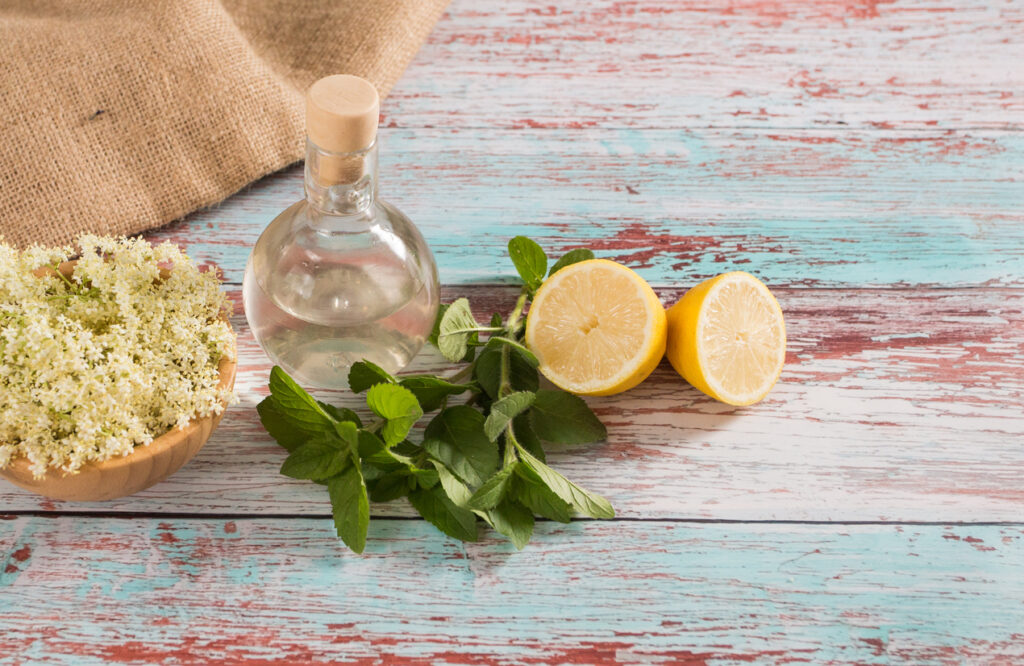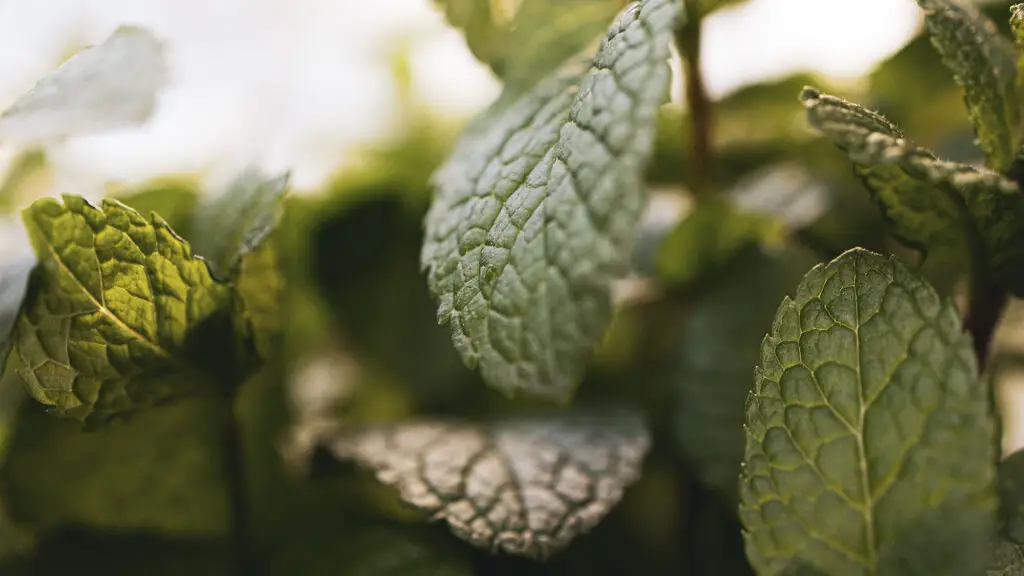Whatever your level of wine knowledge we all know there are common aromas found in wine. You likely have some key flavors that you know will ensure you have an enjoyable glass. Fruit, spices, and vegetal aromas are common. But what about when you get surprising flavors like menthol, mint, or eucalyptus? Why does wine taste like menthol?
Wine can taste like menthol when grapevines are grown in close proximity to eucalyptus trees. A volatile compound called eucalyptol, or 1,8-cineole, is found in eucalyptus tree leaves. It is thought that this essential oil is transferred by air and attaches itself to grapes skin.
Shiraz and Cabernet Sauvignon from South Australia are famously known for their minty aromas.
Before we explain why wine may taste like menthol let’s look at where flavors in wine come from in general.
What Gives a Wine its Flavor?
Wine tastes different and more complex than eating a grape off the vine. Wine grapes contain compounds that are naturally found in their specific variety and they derive compounds from their terroir.
Each type of grape contains different concentrations of compounds lending to key flavors that turn out in wine. They also gain compounds from the environment, air, soil, and growing methods that add new elements.
Wines can take on elements of soil giving them favorable minerality.
Author Note: Climate affects how a wine tastes by altering how the grape clusters develop. Warmer climates offer riper grapes that make wines appear juicier and robust. Cooler climates garner aromas that often tart crisp and more mineral.
During Fermentation aroma compounds called stereoisomers are released. Wine can contain hundreds of different aroma compounds.
When you smell wine the aroma compounds are carried to your nose when the alcohol evaporates. These are called volatile compounds because they quickly evaporate.
Wine also gains compounds during fermentation and aging. Chemical processes take place that develops, increase, and enhance a wine’s characteristic.
All wine goes through fermentation, but additional methods such as the type of barrels or additives give them even more complexity.
Aging wine in oak barrels can offer notes of vanilla or coconut while using stainless steel vats promote crisp fresh characteristics in the wine. A process called malolactic fermentation gives wines like chardonnay a creamy buttery sensation.
Sense of Place

People often enjoy a wine that helps them connect to different parts of the world. It can be a way of experiencing another place without actually going.
Wine can give a sense of place. Aromas can transport you to other environments by signaling chemicals in the brain. Smells are closely tied to our memories and emotions.
Eucalyptus is strongly associated with particular locations. Drinking an Australian Shiraz for example can help you connect with what the environment is like there.
Menthol or eucalyptus is a famously notable character of Australian Cabernet Sauvignon and Shiraz. Most commonly these wines hail from South Australia like the Barossa Valley and the Coonawarra region.
Some call the smell of eucalyptus an “environmental terroir element” because its aroma fills the air and sometimes adds its character to other plants.
Determining Smell and Aroma in Wine
Determining what something smells and tastes like is extremely subjective. We all derive a different impression from what we consume.
Our sense of smell in particular is strongly linked to memories in our brain. In the setting of drinking wine, we link aromas to what we remember the smells to be or the closest thing we can find to that particular smell.
We categorize and recall scents that we have experienced in the past. This is an effort to understand and organize what we are experiencing.
Author Note: All the aromas we smell come from molecules. Our olfactory receptors detect a scent and generate a signal to our brain. Our brain pulls from memories of other scents in our memory bank.
You may smell the wine and your brain recognizes it as blackberry jam. Your memory pulls from your experience of putting jam on a warm biscuit.
Aromas are often described by categorizing them as fruity, floral, vegetal, or herbal. Mint, pine, thyme, oregano, and eucalyptus are examples of herbaceous aromas.
Menthol Aromas from Eucalyptus
Wine is sometimes described as having aromas of menthol, eucalyptus, or mint. This is usually attributed to the monoterpene compound called 1,8-cineol or eucalyptol.
Menthol belongs to the terpene family of compounds and is found in peppermint or spearmint plants. More than 40 terpenes have been identified in wine grapes. Yet, do not let this confuse you with the menthol-like flavor of eucalyptus.
While it is similar, eucalyptol, found in the essential oil of eucalyptus tree leaves. Menthol is extracted from mint plants like peppermint.
Some studies suggest that terpene compounds found naturally in grapes are precursors that can develop into eucalyptus or menthol-like aromas. This may explain why some wines that are not grown near eucalyptus trees portray this characteristic.
Eucalyptus trees, often called gum trees, originated from Australia and are abundantly grown for consumable and therapeutic products. They are often grown in close proximity to vineyards.
It is believed that wines get their eucalyptus flavor from the surrounding eucalyptus trees. The compound called eucalyptol, or 1,8-cineole is carried through the air to the grapes. This compound attaches itself to the waxy grape skin.
While the presence of eucalyptus is most common in Australia it can also be found in other regions like California
How Does Menthol Flavor End Up in Wine?

After the airborne 1,8-cineole compound attaches to a grape’s skin it joins it through the winemaking process.
During Fermentation eucalyptol along with other compounds in the grape skin and seeds fuse into the resulting wine. Because red wine is made by allowing the grape juice to sit in contact with its skin it takes on the compounds that have attached to it.
It has been shown that the closer in proximity eucalyptus trees are to the vines the greater concentration of minty flavor will result in the wine. There are also some thoughts that eucalyptus leaves may be carried by the wind end up mixed with grape bunches during harvest. This is the most common reason why wines can taste like menthol.
White wine from the same regions does not take on the menthol aroma because it is quickly separated from the grape skin during winemaking.
Occasionally you will find this minty flavor in cool climate Cabernet Sauvignon from Bordeaux or Chile.
Garrigue
The eucalyptus phenomenon is much like the French concept of garrigue. Garrigue describes how essential oils from wild plants impart aromas to the wine.
Terpenes are compounds that contribute to fragrance in wine. While 1,8-cineole offers aromas of eucalyptus, alpha-pinene is what produces herbal notes of rosemary and juniper.
Wines from the Mediterranean are often termed as garrigue. It comes from the low growing bushy vegetation that grows in this area. Wines described as garrigue are sometimes described as herb-like containing barnyard or earthy notes.
Lavender that prevails in this region can find its way into a wine’s aroma profile. Common terms to describe this type of aroma are lavender, rosemary, thyme, juniper, or sage.
Pyrazines
Sometimes Cabernet Sauvignon from Bordeaux and South Australia are compared. They both can have herbal notes, but with key differences.
Vegetal aromas are common in bold red wines. Science has discovered some of the compounds that determine what certain compounds smell and taste like in wine.
Author Note: Bordeaux Cabernet Sauvignon is often described as having a strong green pepper aroma. This is used to differentiate it from the menthol aromas of Australian Cabernet Sauvignon.
The green pepper characteristics do not come from plants surrounding the vineyards but are aroma compounds naturally occurring in the grapes. Pyrazine can impart attributes like green bell pepper, jalapeno, green olive, and mint.
The menthol-like characteristic of eucalyptus commonly found in Australian wine is often more noticeable than that from pyrazine compounds.
Food Pairings for Wines that Taste like Menthol

Australian shiraz is usually bursting with dark fruit, black pepper, and eucalyptus aromas. Matching this style of wine with big bold dishes is often the key to a successful food and wine combination.
This style of wine pairs nicely with barbecue. The smokiness of the meat and sweetness of the salt match Shiraz’s black pepper and dark fruit.
Steak with chimichurri sauce is a nice compliment to bold Shiraz with menthol aromas. Shiraz has enough tannin and body to stand up to a hearty steak while the green herbs in the chimichurri align with the eucalyptus notes.
Australian Shiraz or Cabernet Sauvignon are go-to wines for the holidays. Their menthol and spice complement the array of holiday spices. Their body and tannin will hold up to savory food with a lot of flavors.
Conclusion
Menthol like flavors have long been established and a distinguishing characteristic of Australian red wines. People describe them as smelling like petrol, kerosene, gasoline, or burnt rubber.
The aroma of eucalyptus doesn’t mean a wine has gone bad or is faulty. It is a fun aroma that many people enjoy.
Eucalyptus trees are widely grown in Australia and are often in close proximity to wineries. The wind carries eucalyptus oil from the tree leaves over to the winery. Here the oil attaches to the waxy skin of wine grapes.
Eucalyptus oil contains a compound called TDN. This is responsible for the eucalyptus aroma you find in your glass of wine.
TDN attached to the grape skin makes its way into the wine’s fermentation process and on into your glass. The closer in proximity the trees are to the winery the greater the concentration of TDN and eucalyptus flavor will result in the wine. Now you know what to say when someone asks you “why does wine taste like menthol?”.
Grab a bottle of Australian Shiraz and imagine yourself visiting the beautiful country. Enjoy!
To living a full-bodied life,
Wesley

